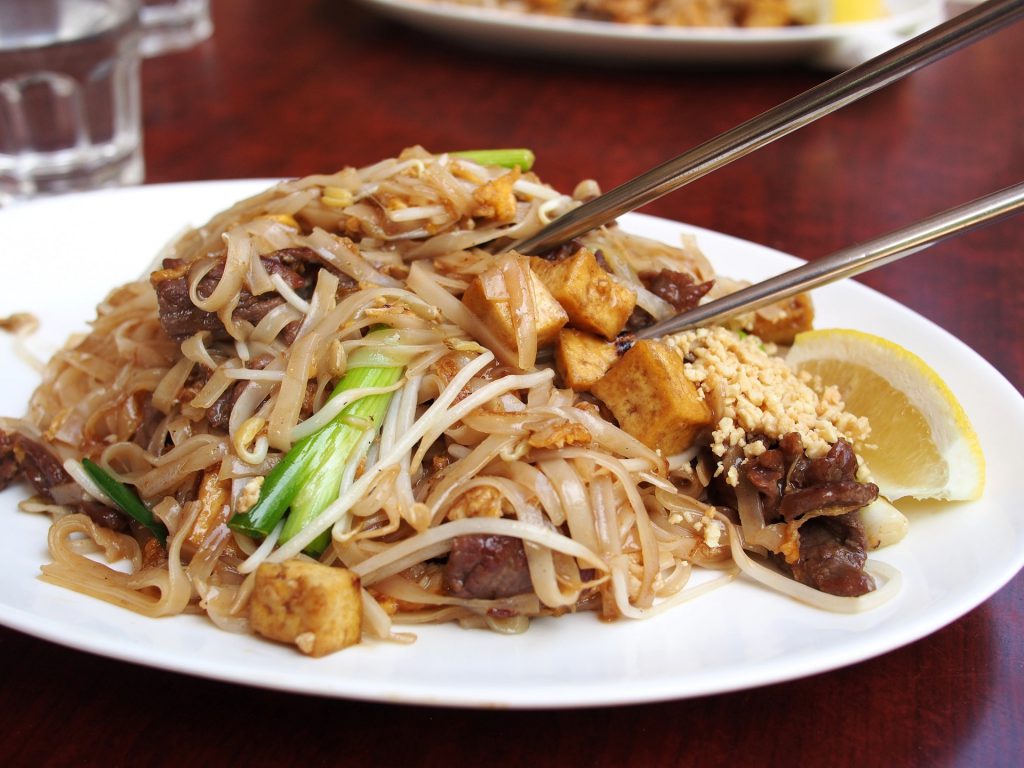What are your suggestions for healthy Thai food at a Thai restaurant?
Q: What are your suggestions for healthy Thai food at a Thai restaurant?
– Anonymous Reader
A: Thai food has gained tremendous popularity in the U.S.—even among Olympic athletes! For the healthiest Thai food next time you’re at a Thai restaurant, keep these tips in mind:
- Thai food gets a lot of its unique flavors and aromas from blends of herbs and spices. Enjoy the flavors of turmeric, garlic, chilis, Thai basil, cilantro and lemongrass in curries, soups and stir-fried dishes—while also reaping their nutritional, cardiovascular, digestive, and other health benefits. If you can handle the heat, add some spicy Sriracha to your dish to also reap the health benefits (blood sugar control, lowered cholesterol) of capsaicin, a compound found in chili peppers used to make the red-hot sauce.
- Choose dishes loaded with vegetables for fresh, light flavors—and to help you make half your plate fruits/vegetables. Vegetables often highlighted in Thai cuisine include cabbage, eggplant, cucumbers, mushrooms, onions and peppers. Fruits like papaya, mango and pineapple are often seen in dishes, as well. Healthy Thai food often makes the most of these ingredients.
- Although vegetarian options are available, many Thai restaurant dishes include an animal-based protein of some sort. To keep your dish healthy, choose lean options, like chicken, shrimp, and fish, rather than higher-fat options, like pork and duck. Opt for steamed, grilled, roasted or stir-fried dishes to limit the extra fat that comes along with fried foods. Eggs are also included in several traditional dishes.
- Coconut milk is a staple ingredient in many Thai dishes. It is loaded with flavor— but also with calories and saturated fat. If you’re craving a creamy dish made with coconut milk, try asking for less milk in your dish or save half of your meal as leftovers to enjoy the next day.
- Fish sauce, usually made from anchovies and sardines, is used in many dishes for enhancing flavor. It’s a significant source of sodium—so ask the chef to use less or none at all to cut the sodium level of your meal.
- Peanuts and sesame seeds are commonly used as garnishes on Thai restaurant dishes. Use them for just that—garnishes, rather than the base of a meal, to reap their healthy fats without taking in too many calories. As for peanut sauce, a little can go a long way in terms of flavor. Use sparingly for the flavor, while keeping sodium intake to a minimum.

